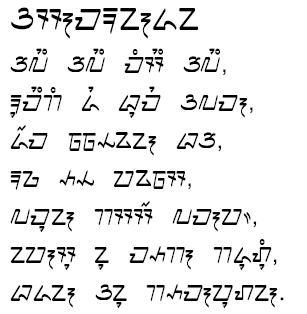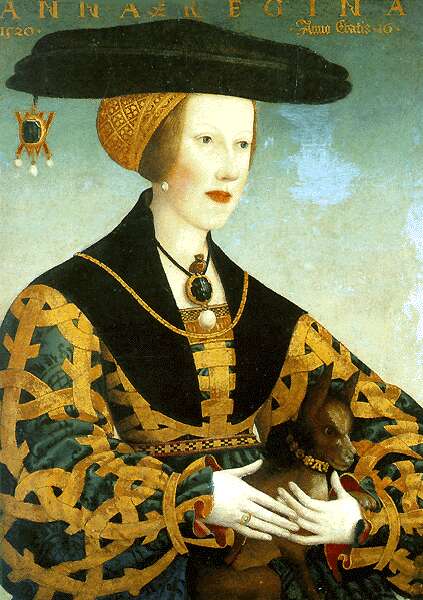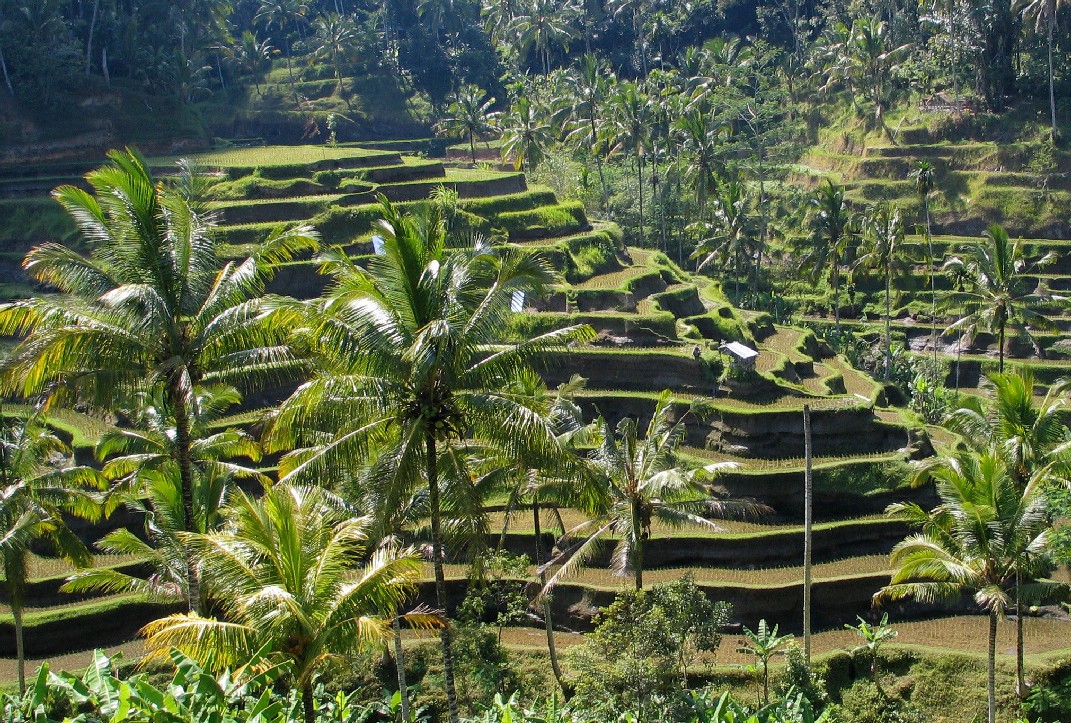|
Smaradahana
''Smaradahana'', also known as ''Smaradhana'', ''Asmaradhana'', ''Asmaradahana'', ''Asmaradana'', ''Asmarandhana'', or ''Asmarandana'' is an old Javanese poem (''kakawin'') written by Mpu Dharmaja as the eulogy for King Kameçvara of Kediri in early-12th century East Java. The story describes the disappearance of Kamajaya (the Hindu god of love) and Kamaratih (the Hindu goddess of love) from Svargaloka after being burnt by a fire that burst from the third eye of Shiva. Their spirits fall upon the earth where incarnated as human beings, their spirits seduce and inspire lovers' hearts. Etymology ''Smaradahana'', ''Smaradhana'', ''Asmaradhana'' or ''Asmaradahana'' is derived from Sanskrit words of ''smara'' and ''dahana''. ''Smara'' means "desire", while ''Dahana'' can be translated as "burning". Thus, ''Smaradhana'' can be roughly translated as "Burning of desire" or "extinguishing the desire". ''Smaradhana''s themes have inspired many works of art and literature in Indonesia, ... [...More Info...] [...Related Items...] OR: [Wikipedia] [Google] [Baidu] |
I Ketut Gedé
I Ketut Gedé was a Balinese painter from the village of Singaraja, active at the end of the 19th century. __NOTOC__ Works He is best known for his illustrations of mythological Hindu tales such as the ''Ramayana''. He produced numerous paintings for Herman Neubronner van der Tuuk in the 1880s and 1890s, and from 1905 onwards for W. O. J. Nieuwenkamp, who considered him to be the best classical painter of his time. File:Bedawang Nala (I Ketut Gedé).jpg , , the mythical turtle carrying the world. File:Singa Barwang (I Ketut Gedé).jpg , Singa Barwang, a winged lion. File:Adiparwa (I Ketut Gedé).jpg , Scene from the ''Adi Parva'', first book of the ''Mahabharata''. File:Smaradahana (I Ketut Gedé).jpg , Scene from the '' Smaradahana'', poem in Kawi. File:Ramayana 1 (I Ketut Gedé).jpg , Scene from the ''Ramayana The ''Ramayana'' (; ), also known as ''Valmiki Ramayana'', as traditionally attributed to Valmiki, is a smriti text (also described as a Sanskrit liter ... [...More Info...] [...Related Items...] OR: [Wikipedia] [Google] [Baidu] |
Kamadeva
Kamadeva (, ), also known as Kama, Manmatha, and Madana is the Deva (Hinduism), Hindu god of Eroticism, erotic love, carnal desire, attraction, pleasure and beauty, as well as the personification of the concept of ''kāma''. He is depicted as a handsome young man decked with ornaments and flowers, armed with a bow of sugarcane and shooting arrows of flowers. He often portrayed alongside his consort and female counterpart, Rati. Kamadeva's origins are traced to the verses of the ''Rig Veda'' and ''Atharva Veda'', although he is better known from the stories of the Purana, ''Puranas''. The ''Atharva Veda'' regards Kamadeva as a powerful god, the wielder of the creative power of the universe, also describing him to have been "born at first, him neither the gods nor the fathers ever equaled". In the ''Puranas,'' Kamadeva is generally mentioned as a ''manasputra, manasaputra'' (mind-born son) of the creator god Brahma. His most popular myth is his incineration by the god Shiva's thi ... [...More Info...] [...Related Items...] OR: [Wikipedia] [Google] [Baidu] |
Kamajaya
Karkono Partokusumo (23 November 1915 – 5 July 2003), better known by the pen name Kamadjaja ( Perfected Spelling: Kamajaya), was an Indonesian journalist and author, who rose to prominence during the Japanese occupation of the Dutch East Indies. Early life and career Karkono was born in Sragen, Central Java, Dutch East Indies, on 23 November 1915. He conducted his education to the junior high school level in nearby Surakarta, then continued his studies at a Taman Siswa school for teachers in Yogyakarta. Though he finished the program, Karkono never became a teacher. Rather, early on he developed an interest in writing, submitting many of his pieces to newspapers, magazines, and youth movement periodicals. Kamadjaja was politically active as well. In 1931 he became the head of the Surakarta branch of ; he remained active in the youth movement through the 1930s. Karkono had entered journalism by 1934, when he is recorded as an editor for ''Soeloeh Pemoeda Indonesia''. Around ... [...More Info...] [...Related Items...] OR: [Wikipedia] [Google] [Baidu] |
Kameshwara
Kameçvara or Kameçwara also known as Kameshwara was the eighth monarch of Kediri Kingdom and ruled circa 1182–1194. His formal stylized name was Çri Maharaja Rake Sirikan çri Kameçvara Sakalabhuvanatustikarana Sarvanivaryyaviryya Parakrama Digjayottunggadeva in addition, during the reign of Sri Kameswara, a poet named Mpu Dharmaja wrote Kakawin Smaradahana, which contains the story of the birth of Ganesha, the elephant-headed god who became the symbol ''Lanchana'' (royal seal) of his reign and of the Kediri Kingdom as stated in the inscriptions. Tradition mentioned King Kameshwara as a man of prowess and a strikingly handsome man. His name derived from ''Kama-ishvara'', another name of Kamadeva, the Hindu god of love and desire. His queen consort Çri Kirana was also mentioned as a woman with extraordinary beauty. Kameshvara was the prince of Kediri, while Çri Kirana was the princess of Kahuripan. The royal marriage between Kameshwara and Kirana was celebrated as the reun ... [...More Info...] [...Related Items...] OR: [Wikipedia] [Google] [Baidu] |
Kumārasambhava
''Kumārasambhavam'' ''( ) (transl. - "The Birth of Kumāra")'' is an epic poem by Kālidāsa. It is widely regarded as the finest work of Kalidasa as well as the greatest kāvya poem in Classical Sanskrit. The style of description of spring set the standard for nature metaphors pervading many centuries of Indian literary tradition. ''Kumārasaṃbhavam'' basically talks about the birth of Kumāra ( Kārtikeya), the son of Shiva (Śiva) and Pārvatī (Umā). The period of composition is uncertain, although Kalidasa is thought to have lived in the 5th century. A fierce debate has raged over the question as to whether the whole of the seventeen cantos came was penned by Kalidasa. Vitthala Śastrin, who in 1866, published Cantos VIII to XVII in ''The Paņdit'', took them as genuine work of Kalidasa while scholars like Hermann Jacobi took Cantos IX to XVII as a later interpolation. Stylistic inferiority of these cantos, rarity of manuscripts, silence on the part of early commentator ... [...More Info...] [...Related Items...] OR: [Wikipedia] [Google] [Baidu] |
Queen Consort
A queen consort is the wife of a reigning king, and usually shares her spouse's social Imperial, royal and noble ranks, rank and status. She holds the feminine equivalent of the king's monarchical titles and may be crowned and anointed, but historically she does not formally share the king's political and military powers, unless on occasion acting as regent. In contrast, a queen regnant is a female monarch who rules ''suo jure'' (Latin for, "in her own right") and usually becomes queen by inheriting the throne upon the death of the previous monarch. A queen dowager is a widowed queen consort, and a queen mother is a queen dowager who is the mother of the current monarch. Titles When a title other than king is held by the sovereign, his wife can be referred to by the feminine equivalent, such as princess consort or empress consort. In monarchies where polygamy has been practised in the past (such as Morocco and Thailand), or is practised today (such as the Zulu people, Zulu ... [...More Info...] [...Related Items...] OR: [Wikipedia] [Google] [Baidu] |
Panji (prince)
The Panji tales are a cycle of Javanese stories, centred around the legendary prince of the same name (actually a title) from East Java, Indonesia. Along with the Ramayana and Mahabharata, the tales are the basis of various poems, sculpture and painting, dance-drama performances and genres of wayang (shadow puppetry), especially the one known in East and Central Java as ''wayang gedhog'' (the meaning here is unclear, as "gedhog" means "a thumping sound"). Panji tales have been the inspiration of Indonesian traditional dances, most notably the topeng (mask) dances of Cirebon, Central Java and Malang, as well as gambuh dance-drama in Bali. Especially in the environs of Kediri, part of the probable homeland of the tales of Panji, local stories grew and were connected with the obscure legendary figure of Totok Kerot. Panji tales have spread from East Java (Indonesia) to be a fertile source for literature and drama throughout Indochina Peninsula (a region that includes modern-da ... [...More Info...] [...Related Items...] OR: [Wikipedia] [Google] [Baidu] |
Bali
Bali (English:; Balinese language, Balinese: ) is a Provinces of Indonesia, province of Indonesia and the westernmost of the Lesser Sunda Islands. East of Java and west of Lombok, the province includes the island of Bali and a few smaller offshore islands, notably Nusa Penida, Nusa Lembongan, and Nusa Ceningan to the southeast. The provincial capital, Denpasar, is the List of Indonesian cities by population, most populous city in the Lesser Sunda Islands and the second-largest, after Makassar, in Eastern Indonesia. Denpasar metropolitan area is the extended metropolitan area around Denpasar. The upland town of Ubud in Greater Denpasar is considered Bali's cultural centre. The province is Indonesia's main tourist destination, with a significant rise in Tourism in Bali, tourism since the 1980s, and becoming an Indonesian area of overtourism. Tourism-related business makes up 80% of the Bali economy. Bali is the only Hinduism in Indonesia, Hindu-majority province in Indonesia, ... [...More Info...] [...Related Items...] OR: [Wikipedia] [Google] [Baidu] |
Southeast Asia
Southeast Asia is the geographical United Nations geoscheme for Asia#South-eastern Asia, southeastern region of Asia, consisting of the regions that are situated south of China, east of the Indian subcontinent, and northwest of the Mainland Australia, Australian mainland, which is part of Oceania. Southeast Asia is bordered to the north by East Asia, to the west by South Asia and the Bay of Bengal, to the east by Oceania and the Pacific Ocean, and to the south by Australia (continent), Australia and the Indian Ocean. Apart from the British Indian Ocean Territory and two out of Atolls of the Maldives, 26 atolls of the Maldives in South Asia, Maritime Southeast Asia is the only other subregion of Asia that lies partly within the Southern Hemisphere. Mainland Southeast Asia is entirely in the Northern Hemisphere. Timor-Leste and the southern portion of Indonesia are the parts of Southeast Asia that lie south of the equator. The region lies near the intersection of Plate tectonics, ... [...More Info...] [...Related Items...] OR: [Wikipedia] [Google] [Baidu] |
Kalidasa
Kālidāsa (, "Servant of Kali"; 4th–5th century CE) was a Classical Sanskrit author who is often considered ancient India's greatest poet and playwright. His plays and poetry are primarily based on Hindu Puranas and philosophy. His surviving works consist of three plays, two epic poems and two shorter poems. Much about his life is unknown except what can be inferred from his poetry and plays. His works cannot be dated with precision, but they were most likely authored before the 5th century CE during the Gupta era. Kalidas is mentioned as one of the seven Brahma avatars in Dasam Granth, written by Guru Gobind Singh. Early life Scholars have speculated that Kālidāsa may have lived near the Himalayas, in the vicinity of Ujjain, and in Kalinga. This hypothesis is based on Kālidāsa's detailed description of the Himalayas in his '' Kumārasambhavam'', the display of his love for Ujjain in '' Meghadūta'', and his highly eulogistic descriptions of Kalingan emperor Hem ... [...More Info...] [...Related Items...] OR: [Wikipedia] [Google] [Baidu] |
Thailand
Thailand, officially the Kingdom of Thailand and historically known as Siam (the official name until 1939), is a country in Southeast Asia on the Mainland Southeast Asia, Indochinese Peninsula. With a population of almost 66 million, it spans . Thailand Template:Borders of Thailand, is bordered to the northwest by Myanmar, to the northeast and east by Laos, to the southeast by Cambodia, to the south by the Gulf of Thailand and Malaysia, and to the southwest by the Andaman Sea; it also shares maritime borders with Vietnam to the southeast and Indonesia and India to the southwest. Bangkok is the state capital and List of municipalities in Thailand#Largest cities by urban population, largest city. Tai peoples, Thai peoples migrated from southwestern China to mainland Southeast Asia from the 6th to 11th centuries. Greater India, Indianised kingdoms such as the Mon kingdoms, Mon, Khmer Empire, and Monarchies of Malaysia, Malay states ruled the region, competing with Thai states s ... [...More Info...] [...Related Items...] OR: [Wikipedia] [Google] [Baidu] |






